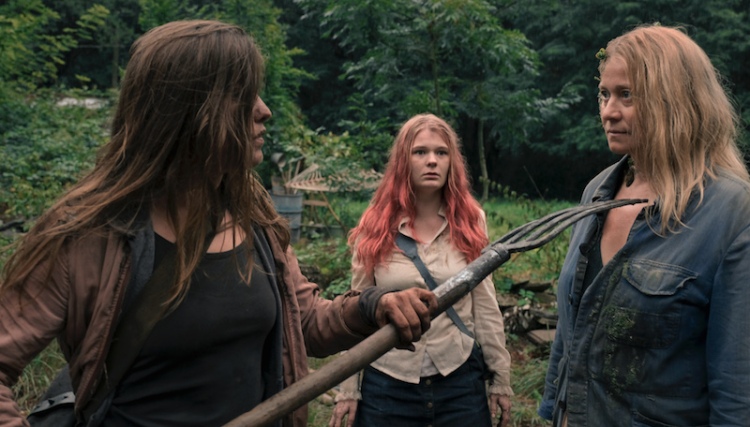It’s safe to say that we were in a major zombie media fatigue. From Shaun of the Dead, Zombieland and The Walking Dead to Warm Bodies and World War Z — filmgoers in the aughts and early 2010s could not escape the Hollywood zombie’s cold, lifeless grasp.
That resurgence comes after the initial zombie buzz popularized in the late 1960s with George A. Romero’s Night of the Living Dead, which solidified our cultural love for zombies and inspired sequels and reboots through 1990. Night of the Living Dead has stayed in the cultural zeitgeist over half of a century later — both through the lasting power of “They’re coming to get you, Barbara” as well as shaping zombie-fueled horror in the decades to come.
Modern zombie films, though, are cut from a different cloth — or at the very least touch on different themes from their predecessors. No longer is the emphasis put on how realistic or scary the zombies look — instead filmmakers are toying with the framework of a zombie film and redefining what that means beyond genre. Jim Jarmusch’s The Dead Don’t Die and Jonathan Levine’s Warm Bodies have been called “zom-coms,” Edgar Wright’s Shaun of the Dead and Ruben Fleischer’s Zombieland are comedies and Yeon Sang-ho’s Train to Busan is as much of a social commentary as it is a genre film.


One of the most recent examples of this new era of zombie films is Carolina Hellsgård’s Endzeit (or Ever After), which premiered at the Toronto International Film Fest last year. Endzeit uses the skeleton of a zombie film to talk about issues often ignored in the genre, most notably trauma, grief and rebirth.
Set in a post-apocalyptic Germany, Endzeit follows the aftermath of a zombie breakout in two different factions of civilization. In the town of Weimar, those who are infected are killed on sight, while the remaining survivors in Jena attempt to find a cure.
Vivi (Gro Swantje Kohlhof) and Eva (Maja Lehrer) are stuck in Weimar. Vivi sees the grueling horrors of the apocalypse first-hand and is haunted by her trauma of losing her sister in the outbreak — often playing out in jarring flashbacks to the early days of the apocalypse or by harming herself in the real world. Eva, conversely, is more closed off. She’s been there longer and has gotten used to the routine — her emotions and compassion have numbed over time.
But after one of the newcomers is infected and swiftly killed — Vivi and Eva decide to escape on the idea that there must be a better life outside of Weimar.
While zombies are the perceived villains of Endzeit, the real horror lies in the inhumane rules of world they live in and the residuals of trauma that keep them awake at night. There are only a few instances where zombies are shown, and they’re quite brief. Endzeit instead shifts the focus on its characters and how their ticks and their pasts have prepared them to survive the apocalypse.

A potentially inadvertent limitation of dystopias is that their characters are one note and homogeneous. This is because the goal of a dystopian environment is maintaining power and control — so its civilians are forcibly stripped away from any sense of identity through assimilation and submission. This can be done by government bodies and dictatorship (think The Hunger Games) or by sweeping plagues or outbreaks in zombie films. While it’s an effective plot device, it can too easily lead to characters without any characterization.
In Endzeit, however, that script is flipped because it does not rely on a wholly homogeneous group of civilians or the spectacle of its herds of zombies. By letting its audience into the disturbed, flawed and traumatized inner workings of its characters the film introduces a much needed humanity in a genre popularized by the undead.
Endzeit follows in the footsteps not only of zombie films before it, but also of recent genre films that primarily discuss ecological horrors. Once infected, the zombies of Endzeit bloom flowers, some even become fully embedded with the nature around them. A woman who lives in the forest between the two remaining towns has flowers growing out of her temple and uses her garden as a burial site and as a place of rebirth for those infected.
The film’s attempt at magical realism is one of its weaker threads — it feels rushed and somewhat inverted from the gritty world established in the first act. But it still mirrors a trend only growing more in popularity in genre film – the ecological villain. Films like Alex Garland’s Annihilation and Colm McCarthy’s The Girl with All the Gifts have used nature as a guiding force for what scares us, either to talk about the rapidly changing environment or to reframe how we view villains as something more amorphous and all around us.
Despite some of its narrative missteps, Endzeit is nothing if not refreshing. It both pays homage to the zombie films before it and challenges what that type of film even is anymore. For Hellsgård, the new age of zombie films are full of vulnerability and burning questions about the world around us.
